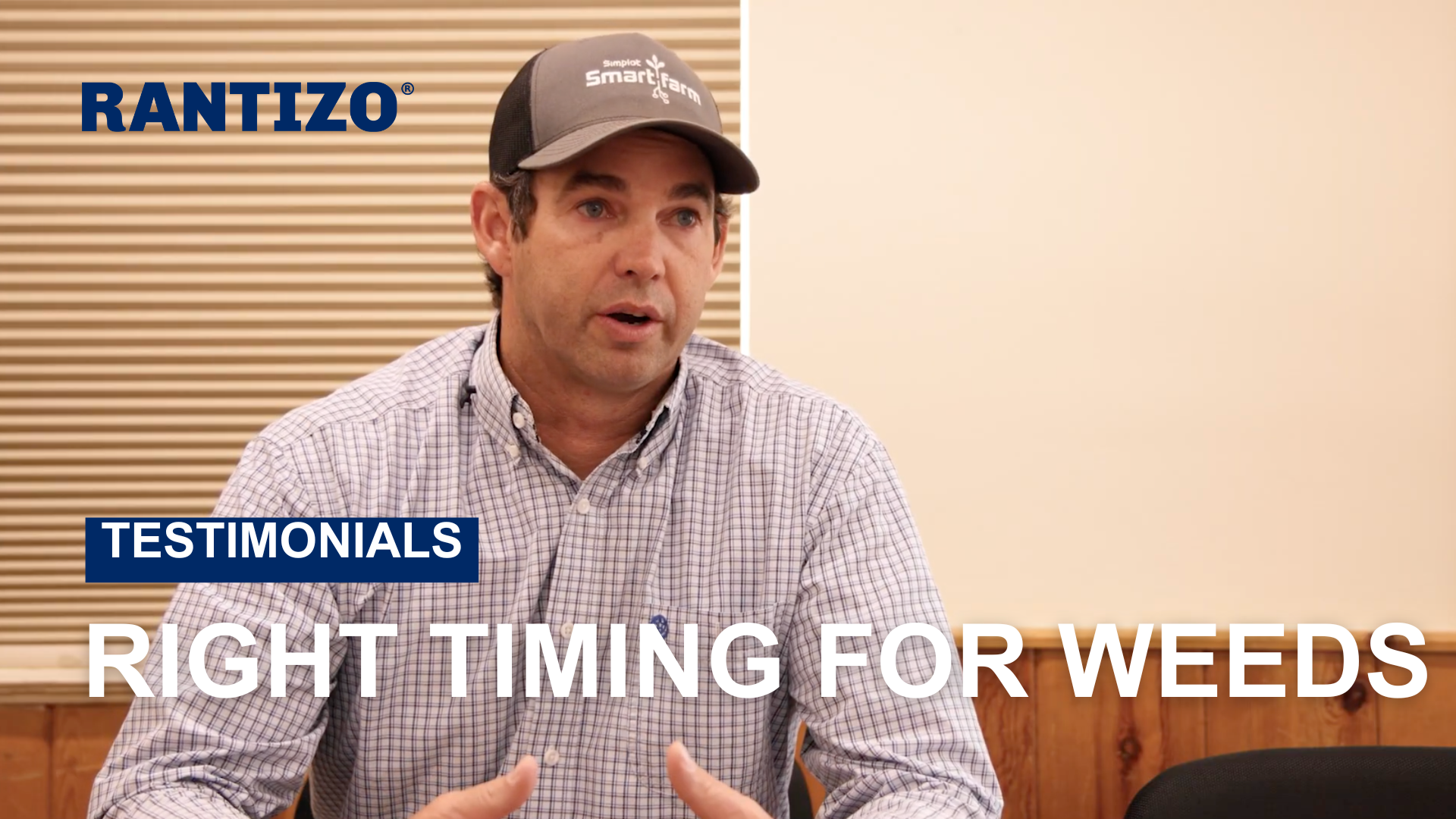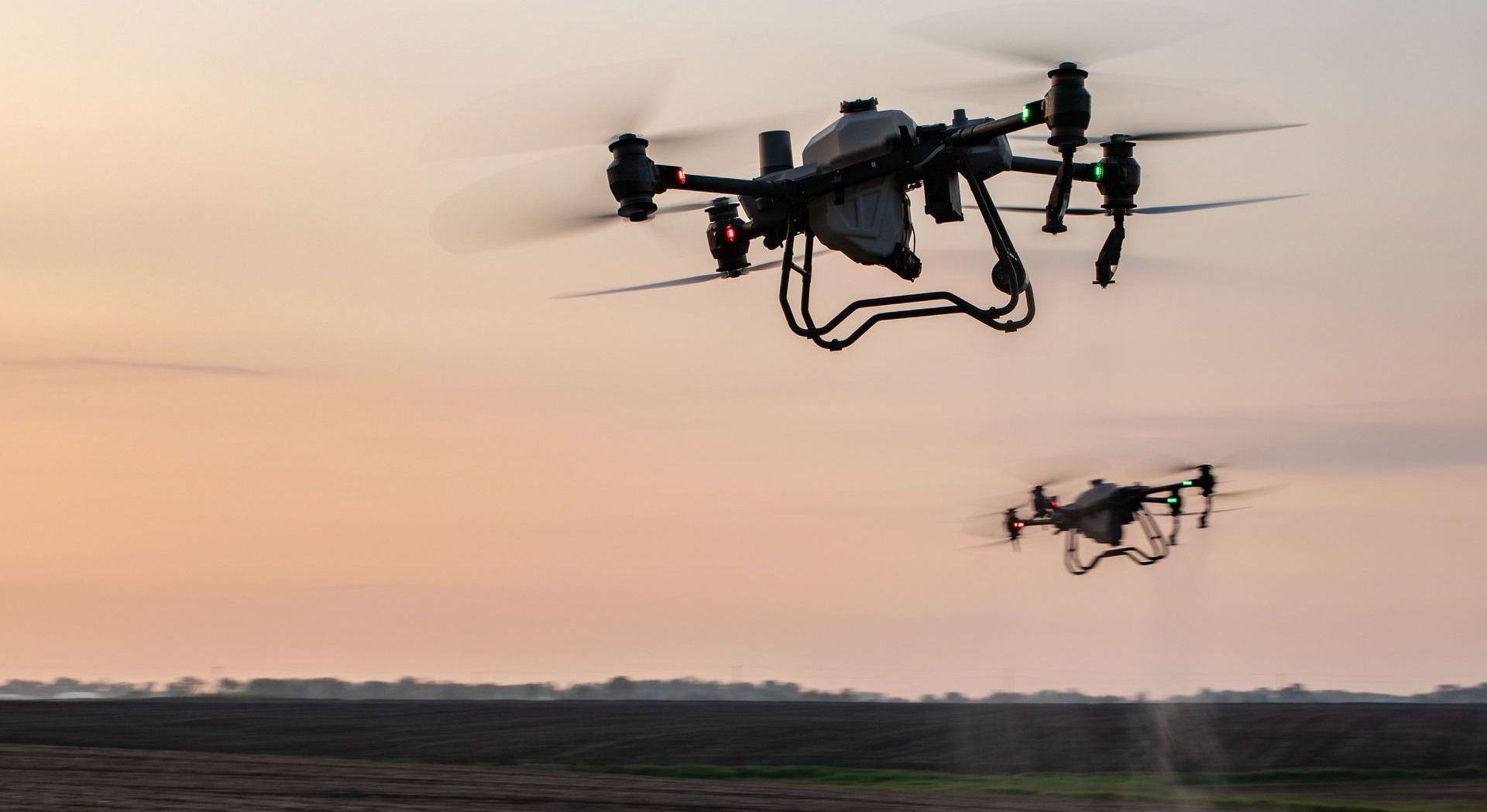RESOURCES
Slaying the Fly Menace
February 3, 2024
Albertson Drone Combats Dairy Fly Infestations with Precision Spraying
Spraying crops can be a round-the-clock activity during the spring and summertime, but how can you fill up your time, outside of your busiest seasons, for additional revenue?
For Kyle Albertson of Albertson Drone Services, a unique opportunity figuratively fell into his lap.
“A local dairy reached out to me asking if I'd be interested in spraying around their barns and pastures to knock the heavy fly population down in summer,” Albertson says. “I gave it a try, then went back a couple weeks later to see how it was working. It worked so well that I've been going strong since.”
The dairy owner had previously tried using a crop duster and helicopter. Unfortunately, neither worked well as they needed to spray the whole farm with an animal and human-friendly spray.
After the first drone application, both Albertson and the dairy owner noticed a big difference in the intensity of the fly infestation. They settled on 2-week spray internals beginning in the spring when the weather warmed up through the end of September.
“When I first drove up to the dairy, I opened my car door and instantly about 25 flies were inside,” he laughs. “Now, after I’ve sprayed a few times, I can leave my door open and hardly see any.”
His business has expanded quickly, and he now handles 4 dairies of 18,000 cattle. Most have him spray wherever flies gather and nest, including between buildings, grassy regions, manure lagoons, standing water and over plastic-covered silage piles.
Albertson started by using a Rantizo upgrade kit on an MG-1P drone, then advanced to an Agras T10. He recently added an Agras T30 for the upcoming season.
The chemicals required depend on the farm, but he normally uses a combination of Serpent insecticide and Durant growth regulator to prevent fly eggs from hatching. Both are available from Atticus.
Albertson has a few tips he’d pass along to drone operators interested in getting into the dairy spraying niche:
- Pay close attention to the weather. Colder weather draws flies indoors, which decreases spray efficiency.
- Wait for temperatures above 65°F to get a better knock-down.
- Be aware of farm location and wind effects. Due to their higher wind conditions, Albertson’s home county, Benton County, Indiana is home to over 150 wind turbines. In an area like this, a normal altitude setting may need adjustment to deliver an accurate spray swath.
- Safe practices are key to success. Of course, people, cattle and other animals should be kept out of the spray zone, but also ask the owners about any open feed sources to avoid in the spray area that you may not have noticed.
- Be sure to establish good communication with clients making sure to inquire about any potential wildlife or pollinator habitats on the dairy. As an example, Albertson has encountered numerous farms supporting bee habitats that would have been damaged by spray pesticides.
- Initially, Albertson charged a $200 per hour fee but has since changed to a per application charge or day fee based on farm acres.
- He flies and controls his drones manually due to tight quarters around barns, buildings and other equipment, usually selecting a height of 8 to 10-ft. (dependent on wind speeds) to deliver the best spray swath.
“A lesson I learned the hard way that I emphasize for new operators spraying dairy farms is to always make sure your batteries are well charged and in good working order when spraying over manure lagoons,” Albertson laughs. “I didn't heed that advice and ended up with my drone floating in manure for about 3 hours.”
Albertson’s clients are extremely happy with how his spray drones control their dairy’s fly populations. They no longer need to worry about pesticide waste due to covering entire farmland bases with human and animal-friendly chemical from airplane applications. Drone spraying ensures accuracy and sustainability with chemicals placed exactly where they’re needed most.
To learn more about this and other use cases, register for our
upcoming webinar.
share this
past blog posts
Related blogs

The right timing of herbicide applications is crucial for crops’ growth stage. Camby Reynolds with Simplot Grower Solutions knows this well for his customers. With drone spraying, he’s able to find the best time for applications for weed management, maintain irrigation, all while maintaining the overall crop growth. Learn more about how he’s implemented spray drones with ground rigs and airplanes in the Bighorn Basin in Wyoming: https://www.rantizo.com/aerial-applications-integrating-spray-drones-and-airplanes-into-a-crop-protection-plan




